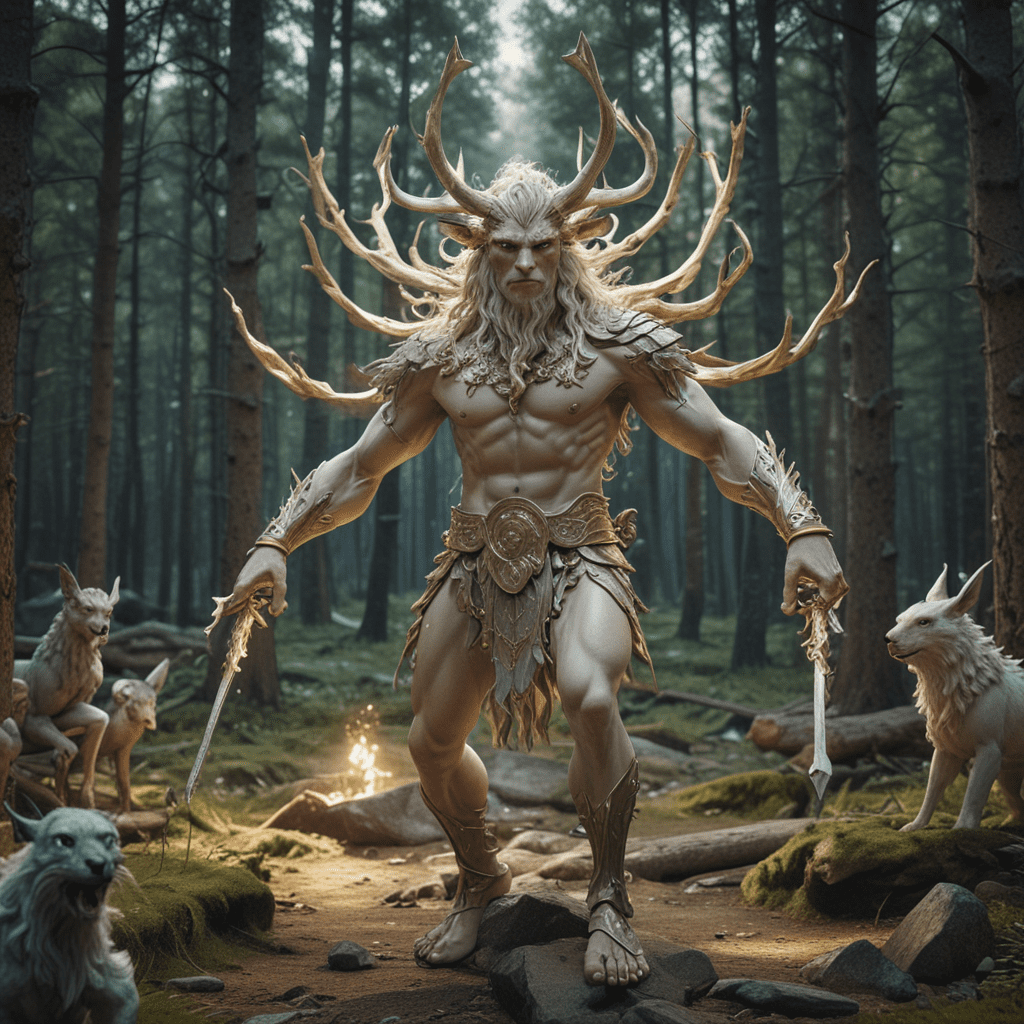Beyond the Myth: Examining the Historical and Cultural Influences on Garuda’s Narrative
I. Introduction
Garuda is one of the most iconic figures in Indian mythology, symbolizing strength, speed, and power. Known as the king of birds, Garuda serves as a vehicle for the Hindu god Vishnu and is revered across various cultures in South and Southeast Asia. This article explores Garuda’s origins, significance, and how its narrative has evolved through historical and cultural lenses.
The purpose of this article is to delve deep into the multifaceted narrative of Garuda, examining its historical roots and cultural interpretations. By understanding Garuda’s significance in different contexts, we can appreciate the depth of its mythology and its relevance in contemporary society.
Understanding the historical and cultural contexts surrounding Garuda’s narrative is crucial for several reasons. It allows us to recognize the influences that shaped its portrayal over time and how it reflects the values and beliefs of the societies that embraced it.
II. The Origins of Garuda in Ancient Texts
Garuda’s origins can be traced back to ancient scriptures, particularly within Hinduism and Buddhism. In the Vedas, Garuda is mentioned as a divine creature with immense strength and the ability to traverse great distances. The Puranas further elaborate on his lineage as the son of the sage Kashyapa and the mythological bird, Vinata.
In Buddhist texts, Garuda also holds significance, often depicted as a protector of the Buddha and his teachings. This duality of Garuda in both Hindu and Buddhist traditions highlights its importance across religions.
When comparing Garuda to other mythological birds, such as the Greek Phoenix or the Egyptian Bennu, we can see thematic similarities, including rebirth and transcendence, but also distinct cultural interpretations that reflect each society’s values.
III. Garuda in Hindu Iconography and Symbolism
Garuda is a prevalent figure in Hindu iconography, often depicted as a large bird with a human-like face. These artistic representations can be found in temples, sculptures, and paintings throughout India. Each depiction carries its own symbolism, reflecting Garuda’s attributes of speed, strength, and the ability to overcome evil.
- Depictions: Garuda is frequently shown in a dynamic pose, soaring through the skies, emphasizing movement and freedom.
- Symbolic Meanings: Garuda represents the triumph of good over evil, divine protection, and the pursuit of knowledge.
- Ritual Significance: In various rituals and ceremonies, Garuda is invoked for blessings, particularly in healing and protection against ailments.
IV. Cultural Variations of Garuda Across South and Southeast Asia
Garuda’s narrative varies significantly across different cultures in South and Southeast Asia. In Indonesia, for instance, Garuda is a national symbol and is prominently featured in the country’s emblem, representing independence and strength.
In Thailand, Garuda, known as “Krut,” is a national symbol as well and is often depicted in royal insignia. Thai interpretations often emphasize Garuda’s role in protecting the monarchy and the country.
Despite these cultural variations, the core attributes of Garuda—strength, speed, and protection—remain consistent. Differences can be summarized as follows:
- Indonesia: Garuda as a symbol of independence and national pride.
- Thailand: Garuda associated with royalty and divine protection.
V. Historical Context: The Evolution of Garuda’s Narrative
The perception of Garuda has evolved through various historical events. In ancient times, Garuda was primarily viewed as a divine being associated with gods. However, the advent of colonialism introduced new interpretations and adaptations of mythological narratives.
The impact of colonialism led to a reinterpretation of Garuda in literature and art, often blending traditional themes with contemporary issues. This evolution reflects broader societal changes and the adaptability of mythological figures.
In modern times, Garuda has been reimagined in various forms of media, from literature to films, showcasing its relevance in contemporary narratives.
VI. Garuda in Contemporary Popular Culture
In contemporary popular culture, Garuda has found a renewed interest, appearing in films, novels, and various artistic expressions. This resurgence reflects a growing fascination with ancient mythologies and their relevance in today’s world.
- Films: Garuda has been depicted in numerous films, often symbolizing heroism and the battle against evil.
- Literature: Contemporary writers have drawn upon Garuda’s narrative to explore themes of identity, cultural heritage, and the human experience.
- Art: Modern artists continue to reinterpret Garuda, blending traditional motifs with contemporary aesthetics.
VII. Theological Perspectives on Garuda’s Significance
Theologically, Garuda holds profound significance within Hinduism. As the vehicle of Vishnu, Garuda embodies the divine connection between the gods and mankind. This role implies a responsibility to uphold dharma and combat evil.
The duality of Garuda, representing both divine and demonic qualities, adds complexity to its narrative. Philosophers and theologians have explored this duality, examining how it reflects human nature and the struggle between good and evil.
VIII. Conclusion
In conclusion, the narrative of Garuda is rich with historical and cultural influences that have shaped its portrayal across time and space. From its origins in ancient texts to its representation in contemporary culture, Garuda remains a powerful symbol of strength, protection, and transcendence.
Understanding the ongoing relevance of Garuda in modern society encourages further exploration of mythological figures within cultural studies. As we continue to engage with these narratives, we uncover deeper layers of meaning that resonate with contemporary audiences.


